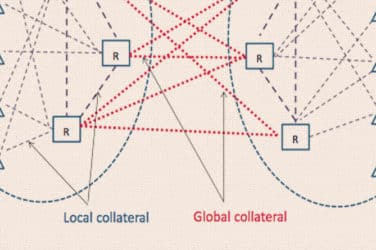
BNP Paribas launches service for both cleared and non-cleared OTC derivatives.
New regulations mandating that OTC derivatives be centrally cleared are placing a burden on end users in the form of increased margin and collateral requirements.
That’s spurring banks to launch services aimed at simplifying the clearing process in order to help clients avoid the associated funding costs and increased complexities.
BNP Paribas Securities Services is extending its collateral management service to include centrally-cleared OTC derivatives. The service, which will be fully operational in early 2012 and delivered via a real-time view of both centrally and bi-laterally cleared trades, helps institutional investors manage both collateral and risk measurement across multiple counterparties – dealers, clearers and central counterparties – and changing eligibility requirements.
“The service aims to be consistent across both centrally and bi-laterally cleared trades,” Helene Virello, head of collateral management and OTC valuation at BNP Paribas Securities Services, told Markets Media.
“The ultimate goal is to move collateral smoothly between clients, counterparties and clearers within settlement times that will be comfortable,” said Virello. “The ultimate goal is to organize things as seamlessly as possible, therefore providing a time optimized, transformation feature.”
Institutional investors have historically been used to dealing with “normal” non-centrally cleared OTCs. However, the introduction of the Dodd-Frank Act in the U.S. and European Market Infrastructures Regulation is set to drive a significant amount of OTCs onto electronic platforms and cleared by central counterparties.
“Given increased collateral requirements, clients expect the optimization of collateral allocation and transformation. This forms a value chain which has strict operational constraints,” said Virello. “These are elements which we have integrated into our offering.”
The impact of new legislation on collateral management will be immediate and deeply felt.
“Dodd-Frank will result in very sudden impacts on collateral management,” said Virello. “First the need to manage collateral on cleared trades will result in significant changes to operational processes, and initial margin requirements by CCPs will increase the amount of collateral in circulation.”
“Second, today, for non-cleared trades, there is total flexibility of whether or not to negotiate collateral agreements,” Virello said. “The definition of the terms is left up to the participants in the collateral contracts.”
With Dodd-Frank, the most immediate change on non-cleared trades will be an increase in the number of collateral agreements (obligations of collateralization for many institutions) and in the amounts of collateral exchanged.
“While initial margins are already a common practice for hedge funds, the DFA regulation, as per its current progression, will likely drive the majority of users of OTC derivatives to post initial margins to their counterparties – a practice they are not used to,” said Virello.
Regulators also have strict requirements on how these agreements should be written with eligibility, thresholds, minimum transfer amounts and initial margin calculations coming into play, Virello said.





